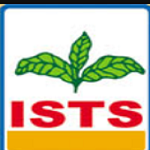In India, organized tobacco research has its origin in the mid-1930s with the establishment of the Cigarette Tobacco Research Station at Guntur under the patronage of the formerly Imperial Agricultural Research Institute (IARI), New Delhi. With the growing importance of tobacco in the national economy, the Government of India constituted the Indian Central Tobacco Committee (ICTC) to establish the Central Tobacco Research Institute (CTRI) in 1947. Subsequently, the institute was brought under the aegis of the Indian Council of Agricultural Research (ICAR) in the year 1965. Since its origin, the Institute has been commanding national tobacco research and has contributed to the growth and development of tobacco science in India. Through its long voyage of 77 years, the Institute has evolved into a tobacco research network system with 6 research stations located in different states across the country, one All India Network Project on Tobacco, and 2 Krishi Vigyan Kendras catering to the research needs of varied tobacco types grown across the country. Tobacco is one of the important high-value commercial crops in India. It is grown in an area of 0.425 million hectares over 15 states in India. Presently, India stands second in the production of tobacco (772 million kg) in the world after China. It provides employment directly and indirectly to 45.7 million people and contributes to nearly Rs.72,788 crore as excise duty and Rs. 12006 crore in terms of foreign exchange to the national exchequer. A unique feature of tobacco production in India is that myriad styles of Flue-cured Virginia (FCV) and non-FCV tobacco are cultivated under widely differing agroecological situations. The FCV, bidi, hookah, chewing, cigar wrapper, cheroot, burley, Oriental, HDBRG, Lanka, Pikka, Natu, etc. are the main types of tobacco grown in the country, with FCV and Burley tobacco being the main exportable types.
 GOVERNMENT OF INDIA
GOVERNMENT OF INDIA  ||
MINISTRY OF AGRICULTURE AND FARMER'S WELFARE ||
||
MINISTRY OF AGRICULTURE AND FARMER'S WELFARE ||  Security Audited
by Yoganandh & Ram LLP
Security Audited
by Yoganandh & Ram LLP














 Tender notice for sale of litchi trees
Tender notice for sale of litchi trees















